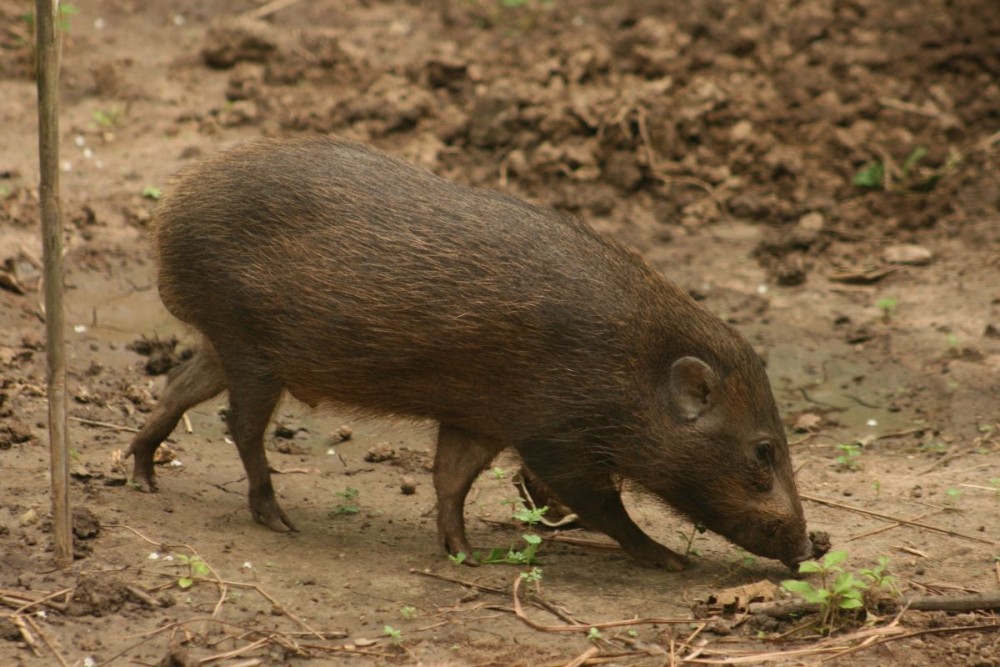Photo Coutesy: P Jeganathan

Taruna Patidar
In the heart of Northeast India’s grassland ecosystem lives a creature so unique, it’s rewriting the narrative on pig behaviour. The Pygmy Hog (Porcula salvania), standing at just 10 inches tall, is not merely a small pig; it is a resourceful nest builder, a diurnal forager and a symbol of successful conservation against seemingly insurmountable odds.
Once roaming freely across the Himalayan foothills from Uttar Pradesh to Assam, the Pygmy hog’s population has drastically declined due to habitat loss and hunting. Today, this 'Critically Endangered' species is confined to a handful of protected areas, primarily within Manas National Park in Assam. What sets this tiny hog apart isn’t just its size but also its ingenuity. Unlike most pig species, Pygmy hogs construct intricate nests that are far from haphazard piles of grass. These carefully engineered shelters feature insulated walls and often include a roof for added protection against the elements. These nests serve as communal nurseries, offering safety and warmth, especially during the harsh monsoon season—a rare behavior among pigs that underscores the hog’s remarkable adaptation to its environment.
Pygmy hogs are also unique in their daily habits. While most pigs are nocturnal, these diminutive creatures are active during the day, spending their daylight hours foraging for roots, tubers, insects and even earthworms. Their specialized diet plays a vital role in maintaining the delicate balance of their grassland habitat by aiding in seed dispersal and controlling insect populations. Scientists are still deciphering the meaning behind their grunts and squeals, but these vocalizations help them communicate within their close-knit family groups, adding to their enigmatic appeal.
Despite their resourcefulness, Pygmy hogs face immense challenges. The grasslands they depend on are under constant threat from agricultural expansion, human settlements and overgrazing by domestic livestock. These pressures degrade their delicate nests and disrupt their natural behaviors. However, there is hope through the Pygmy Hog Conservation Programme (PHCP), initiated in 1995 by a coalition of organizations including the Durrell Wildlife Conservation Trust and local NGOs. This program has been instrumental in reversing the decline of this species through captive breeding and habitat restoration efforts.
Since its inception, over 179 captive-bred Pygmy hogs have been released into the wild, with many now believed to be born in their natural habitat. The reintroduction process is painstakingly meticulous; conservationists provide nesting materials to teach captive-bred hogs how to build nests—a skill essential for survival in the wild. Additionally, captive hogs are reintroduced to wild food sources to help them adapt to the diverse grassland environment. Recent camera trap studies have revealed promising developments: pregnant females have been spotted in the wild for the first time since the program began, signaling successful breeding and adaptation.
Pygmy hogs are not just fascinating creatures; they are also considered an indicator species for their habitat. Their presence signals a healthy ecosystem within Northeast India’s tall wet grasslands—an ecosystem that supports other endangered species such as the Bengal florican and hispid hare while providing essential services like flood regulation and groundwater maintenance.
The conservation efforts undertaken by PHCP emphasize engaging local communities in preservation initiatives. By recognizing the Pygmy hog as part of their natural heritage, these communities can become guardians of its future. Restoring grasslands is not only crucial for the survival of this tiny survivor but also vital for maintaining long-term water security for farming communities living on the periphery of Manas National Park.
The story of the Pygmy hog is a testament to the power of conservation and serves as a reminder that even the smallest creatures can have a significant impact on their environment. As Northeast India faces increasing environmental pressures—from habitat destruction to climate change—the Pygmy hog stands as a symbol of resilience and hope. Its fate is intricately linked to that of its habitat; ensuring its survival means safeguarding one of nature’s most delicate ecosystems. In doing so, we not only preserve this unique species but also protect the rich biodiversity that defines Northeast India’s natural heritage—a legacy worth fighting for.
The author is from Jhalawar, Rajasthan. She has done M.Sc. in Wildlife Science and am currently a PhD Scholar at the University of Kota, Rajasthan.



